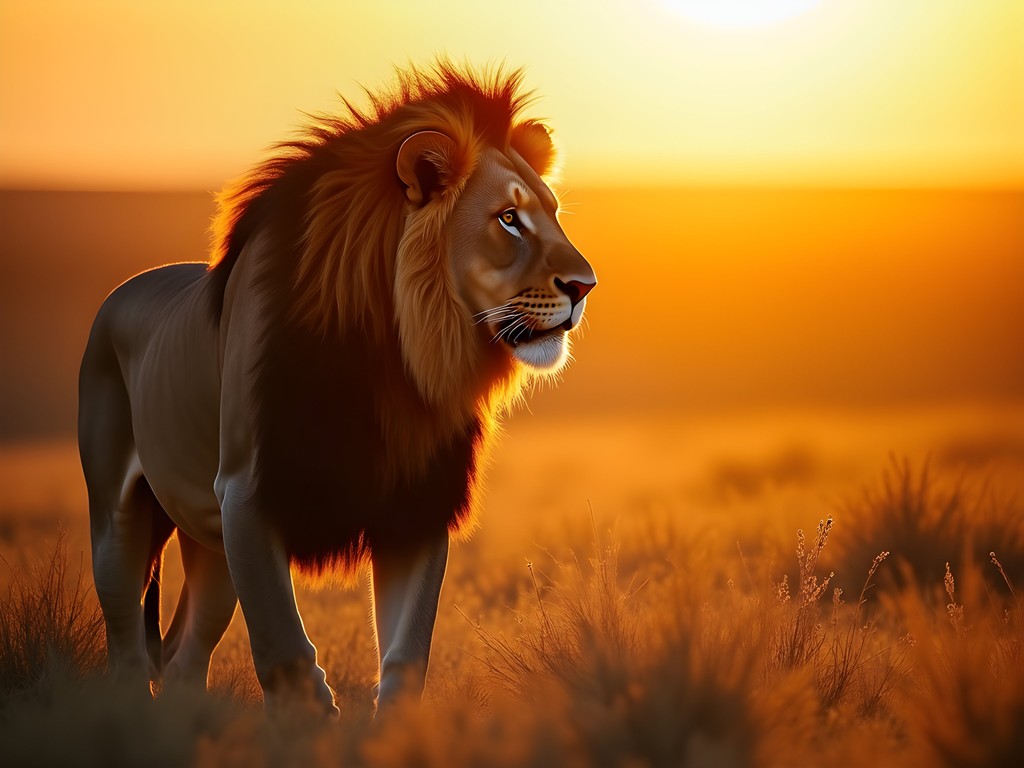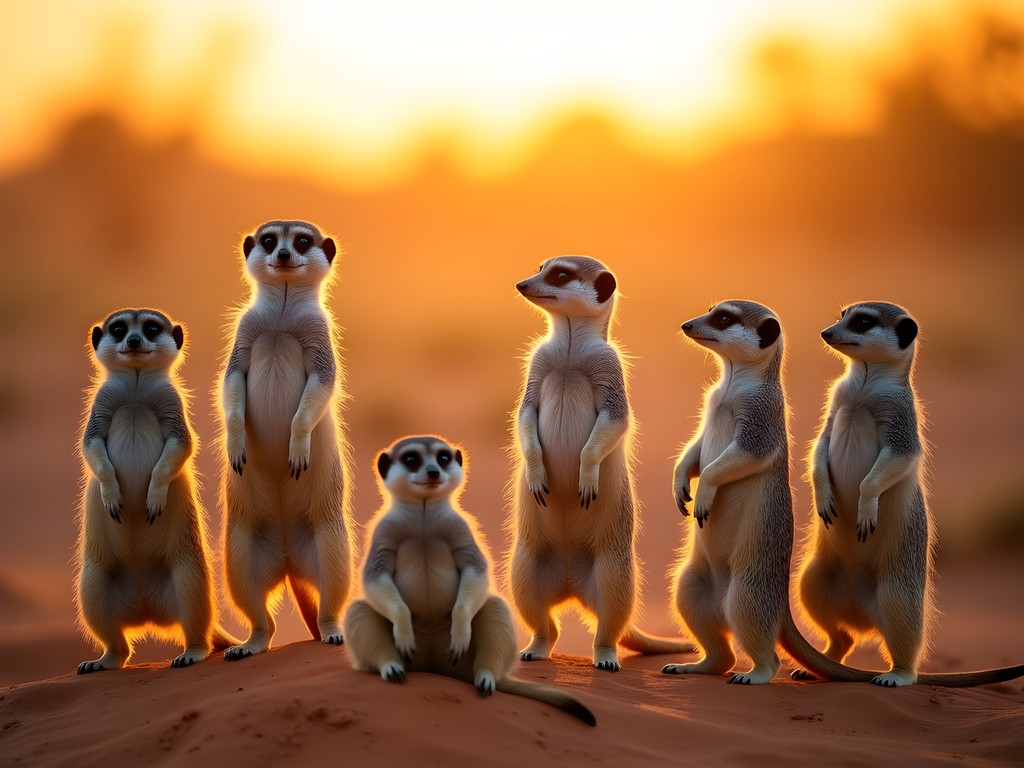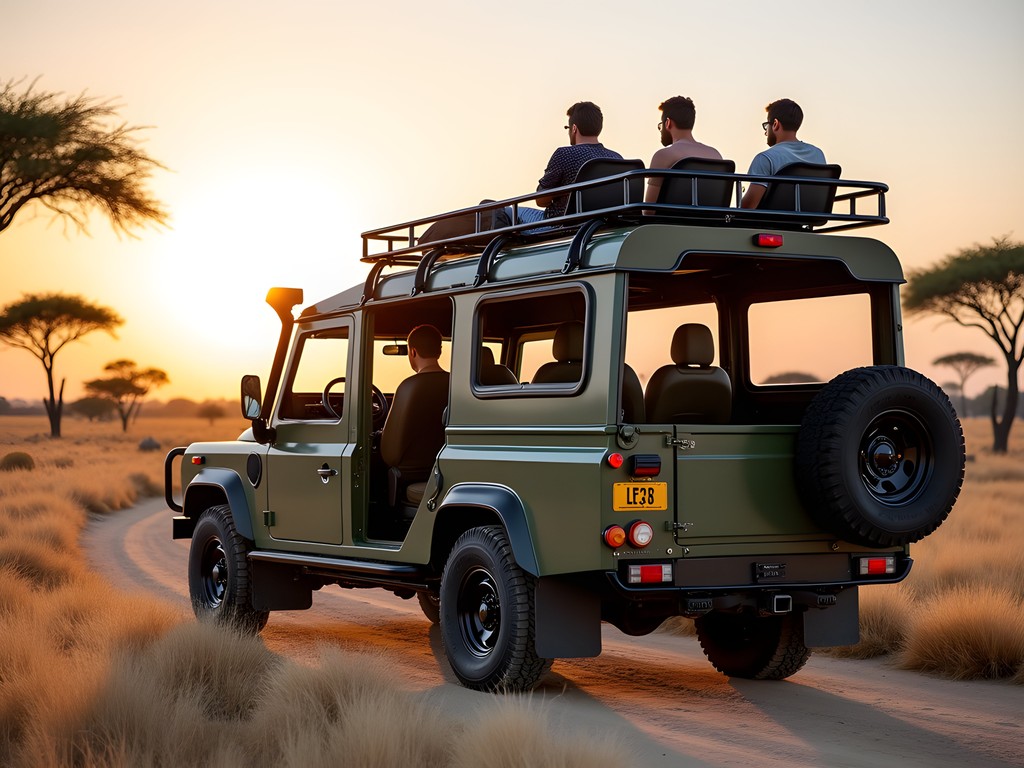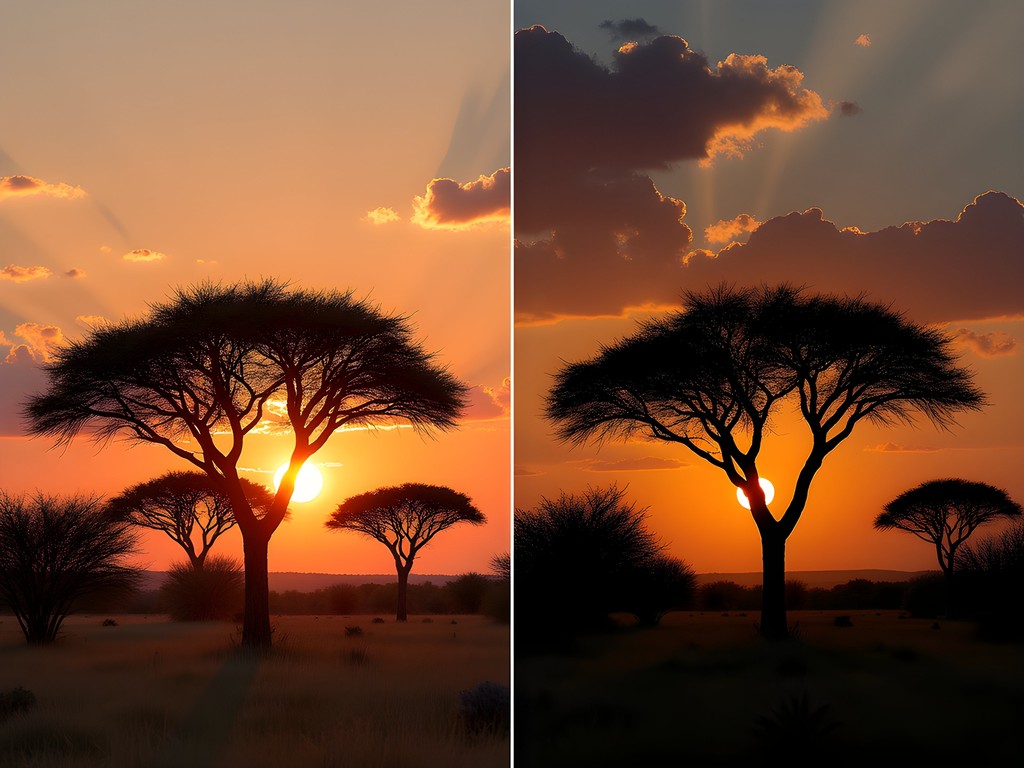Disclosure: This article contains affiliate links. We may earn a commission from purchases at no extra cost to you, which helps our travel content.
The Central Kalahari Game Reserve stretches across 52,800 square kilometers of wilderness—a photographer's canvas painted with golden grasslands, ancient baobabs, and some of Africa's most resilient wildlife. Having photographed across six continents, I can confidently say that few landscapes challenge and reward a photographer quite like the Kalahari's stark beauty. This vast desert ecosystem demands technical mastery, patience, and a profound respect for its rhythms—qualities I've honed through years of marathon training that unexpectedly prepared me for the discipline of wildlife photography.
Essential Gear for Kalahari Photography
The Kalahari's extreme conditions demand thoughtful preparation beyond standard safari gear. During winter (June-August), temperatures swing dramatically—near freezing at dawn when wildlife activity peaks, to comfortably warm by midday. I've learned to layer strategically, starting with a moisture-wicking base and adding a insulated vest that provides core warmth without restricting movement when tracking and framing shots.
For your equipment, dust protection becomes paramount. I never enter the Kalahari without my camera rain cover which, despite its name, offers excellent protection against the fine Kalahari dust that can devastate camera sensors. Each night, perform a thorough cleaning ritual using a sensor cleaning kit to maintain image quality throughout your journey.
Telephoto lenses are non-negotiable here—the 100-400mm range offers versatility for both landscape compositions and wildlife portraits. Remember that vehicle movement, even from fellow photographers shifting position, can ruin a critically-timed shot, so a lens stabilizer provides crucial stability when shooting from safari vehicles.

💡 Pro Tips
- Pack silica gel packets in your camera bag to combat humidity fluctuations
- Bring twice as many memory cards as you think you'll need—the Kalahari's photographic opportunities are boundless
- Use a polarizing filter to cut through midday haze and enhance the rich earth tones
Mastering Light in the Desert
The Kalahari's light is both its greatest gift and challenge to photographers. Winter brings crystalline clarity to the air, creating extraordinary conditions for photography—if you know how to work with them. The golden hours here extend longer than in many locations, but with heightened intensity. I've found that exposure compensation becomes critical technique; consistently underexpose by 1/3 to 2/3 stops during the first and last hours of daylight to preserve the rich golden tones that make Kalahari images so distinctive.
Midday presents different challenges. The harsh overhead sun creates deep shadows and blown highlights that can flatten your compositions. Rather than putting your camera away, this is when I focus on black and white conversions that leverage this contrast rather than fighting it. The graduated ND filter has saved countless midday shots for me, balancing the bright sky against shadowed subjects.
Perhaps most magical are the twilight transitions. The blue hour in the Kalahari has an otherworldly quality—particularly when capturing predators on the move. Adjust your white balance manually rather than relying on auto settings to preserve the atmospheric cool tones that tell the story of this transition time.

💡 Pro Tips
- Position yourself with the sun at your back during morning game drives for optimal wildlife lighting
- Use exposure bracketing for high-contrast scenes like animals drinking at waterholes
- Watch for dust-enhanced light rays during early morning and late afternoon drives
Wildlife Behavior and Ethical Photography
Understanding animal behavior transforms good wildlife photography into extraordinary storytelling. The Kalahari's winter season concentrates wildlife around diminishing water sources, creating unparalleled photographic opportunities—but with great responsibility. I've witnessed photographers crossing ethical lines to get 'the shot,' often disturbing natural behaviors in the process. My marathon discipline has taught me that patience yields greater rewards than aggressive pursuit.
Before my first Kalahari trip, I invested time studying predator hunting patterns and prey vigilance behaviors. This knowledge allows me to anticipate decisive moments rather than merely reacting to them. When photographing the reserve's famous black-maned lions, for instance, I look for subtle ear movements and tail flicks that telegraph hunting intentions long before the action begins.
I always carry my field notebook to record behavior patterns at specific locations, creating a personal database that improves with each visit. For ethical wildlife viewing, a quality spotting scope allows observation from distances that don't disturb natural behaviors, helping you plan compositions before moving into camera range.

💡 Pro Tips
- Learn to read animal body language to anticipate photographic moments
- Maintain at least 50 meters distance from predators with cubs or kills
- Record GPS coordinates of promising locations for return visits at different times
Luxury Lodges with Photographer Benefits
While my plant-based lifestyle and environmental values typically lead me toward eco-conscious accommodations, I've discovered that Botswana's luxury lodges offer unique advantages for serious photographers. Properties like Kalahari Plains Camp and Tau Pan Camp combine environmental responsibility with photographer-friendly features that justify their premium rates.
My recent stay at Dinaka Safari Lodge revolutionized my Kalahari experience through their dedicated photographic vehicles with swivel seats, cut-out windows, and camera mounts—features that directly translated to sharper images and more successful shoots. Their guides, many photographers themselves, understand the importance of positioning vehicles for optimal light and composition.
The luxury of having a private guide means you can request extended time at sightings rather than rushing between locations. I always travel with my portable power station which most premium lodges will happily recharge between drives, ensuring my batteries and devices remain operational throughout the trip. For keeping equipment cool in the vehicle, nothing beats a insulated equipment bag which protects sensitive gear from the punishing midday heat between morning and afternoon shoots.

💡 Pro Tips
- Request a photography-specialized guide when booking luxury lodges
- Arrange private vehicles if your budget allows—the freedom to set your own schedule is invaluable
- Discuss your photographic goals with lodge management before arrival so they can match you with appropriate guides
Post-Processing the Kalahari Palette
The Kalahari's distinctive color profile demands thoughtful post-processing to translate what your eye witnessed to what your audience will experience. After years photographing this landscape, I've developed a workflow that honors its unique characteristics while creating compelling visual narratives.
Begin by calibrating your editing monitor with a color calibrator to ensure accuracy across the Kalahari's subtle earth tones. The reserve's winter palette features a surprising range—from the deep oranges of dawn to the platinum midday hues and the violet cast of dusk. I maintain separate develop presets for each lighting condition.
Dust particles, inevitable in the Kalahari atmosphere, can either diminish your images or enhance them dramatically. Rather than removing all atmospheric haze, I selectively preserve it when it creates depth or captures light rays. The editing tablet allows the precision necessary for this selective editing approach, particularly when creating masks around intricate subjects like acacia trees or wildlife.
For my plant-based followers, I always process and share images of the Kalahari's often-overlooked botanical adaptations alongside the charismatic megafauna. These remarkable desert specialists tell an equally compelling story of survival and adaptation that complements the wildlife narrative.

💡 Pro Tips
- Create separate catalogs for different Kalahari regions to maintain consistent processing across similar landscapes
- Use graduated filters in post-processing to enhance the dramatic Kalahari skies without affecting foreground exposure
- When processing black and white conversions, push contrast further than you might in other environments—the Kalahari's stark nature supports this treatment
Final Thoughts
The Central Kalahari demands more from photographers than technical proficiency—it requires presence, patience, and profound respect for its rhythms. My marathon training unexpectedly prepared me for the discipline required here: the predawn starts, the hours of watchful waiting, and the capacity to remain fully present when opportunity finally presents itself. The images you'll create here go beyond mere wildlife documentation; they tell stories of ancient adaptation and survival against impossible odds.
As you prepare for your own Kalahari photography expedition, remember that the most compelling images emerge not from perfect equipment but from perfect positioning—both physical and mental. Approach each day with intentionality, respect the environment and its inhabitants, and allow yourself to be transformed by this remarkable landscape.
When I reflect on my decades of travel photography across six continents, my Kalahari portfolio stands apart—not merely for the images captured, but for how the process of creating them changed my perspective. I invite you to experience this transformation for yourself. The desert is waiting.
✨ Key Takeaways
- Winter (June-August) offers the best photography conditions with clear air and concentrated wildlife
- Invest in proper dust protection for your equipment to prevent sensor damage
- Understanding animal behavior patterns leads to anticipating rather than reacting to photographic moments
- Luxury lodges provide specialized photography vehicles and knowledgeable guides that justify their premium rates
- The Kalahari's unique light demands specialized exposure techniques and thoughtful post-processing
📋 Practical Information
Best Time to Visit
June to August (winter)
Budget Estimate
$800-1200 per person per night at luxury lodges
Recommended Duration
7-10 days minimum
Difficulty Level
Advanced
















Comments
luckyblogger
WOW! Just wow! I've been dreaming of photographing the Kalahari for years and your images have me ready to book a flight tomorrow! The way you captured those oryx silhouettes against the dunes is pure art. Can't stop scrolling through these photos! Did you use a teleconverter for any of the bird shots? They're so crisp!
Brandon Tanaka
Thanks luckyblogger! For most bird shots I used a 500mm prime, but did add a 1.4x teleconverter for those secretary bird hunting sequences. The light was so good I could get away with the slight aperture loss.
blueguy
Those honey badger shots are incredible. So hard to photograph!
Savannah Walker
Brandon, your guide brought back all the emotions from my Kalahari trip last year! There's something about those vast spaces that changes how you approach photography entirely. I found myself shooting less and experiencing more - quality over quantity. For anyone planning a trip, I'd emphasize Brandon's point about the extreme contrast - I underexposed most shots by 1-2 stops to preserve those incredible sky details. Also, the night photography opportunities are unreal - those star trails over baobabs! The silence of the Kalahari nights is something I still dream about. Just sitting with my camera, waiting for the milky way to appear while hearing distant lions calling... pure magic.
adventurenomad
Just got back from Botswana and this guide is SPOT ON! The section about patience really resonated - I spent three hours waiting by a waterhole that seemed empty, then suddenly had an entire elephant family arrive for the most magical sunset shots. The tip about shooting from ground level with meerkats changed my whole approach. One thing I'd add is to bring way more memory cards than you think you need. I filled up 128GB daily because the light was so gorgeous I couldn't stop shooting! Also, the lodges Brandon recommended are worth every penny for photographers - the private vehicles mean you can position perfectly for light.
luckyperson
Great post! I'm a photography beginner with just a basic DSLR. Would the Kalahari still be worth visiting for photography or should I build more skills first? Those ethical wildlife photography tips are really eye-opening btw.
Savannah Walker
Jump right in! The Kalahari is actually perfect for beginners because the landscapes are so dramatic and the animals often stand out against those golden grasses. Just make sure you have at least a 300mm lens for wildlife. The guides there are super helpful with positioning too!
Hunter Thompson
Brilliant guide, Brandon! I was in the Central Kalahari last year and wish I'd had this beforehand. The light there is unlike anywhere else - that golden hour stretches forever in winter! For anyone planning a trip, I'd add that bringing a good lens cleaning kit is absolutely essential. The fine Kalahari dust gets EVERYWHERE. Also found that staying at Kalahari Plains Camp gave amazing access to those hard-to-reach pans you mentioned. The guides there knew exactly when the meerkats would be most active for photos. Did you make it to Deception Valley? The predator photography there blew my mind!
blueguy
How many days would you recommend staying? Is a week enough?
Hunter Thompson
Absolute minimum of 4 days, but a week is perfect. The distances between good spots are huge!
moonninja
Those black-maned lion shots are INCREDIBLE! Goals!
oceanpro
This guide is exactly what I needed! Heading to Botswana in November and was stressing about camera gear. The section on morning light techniques is gold - never thought about how dramatic those grasslands would look at sunrise. Brandon, did you find the dust to be a major issue for lens changes? I'm debating whether to bring my full kit or just stick with a versatile zoom.
Brandon Tanaka
Thanks oceanpro! The dust is definitely something to plan for. I'd recommend a good zoom like the 100-400mm and maybe just one wide angle. Lens changes in the field were tricky - I used a camera jacket and did most switches in the vehicle. Better to miss a few shots than risk sensor dust!
oceanpro
Super helpful, thanks! Will definitely limit my lens changes then.
springking
OMG THOSE MEERKATS!!! 😍 I need to go immediately! Your photos are STUNNING Brandon!
Brandon Tanaka
Thanks! The meerkats were definitely a highlight. If you go, try to visit during green season (Jan-Mar) when there are lots of babies around!
beachvibes
Those black-maned lion photos are epic! Adding this to my bucket list right now.
Venture X
Premium card with 2X miles, $300 travel credit, Priority Pass